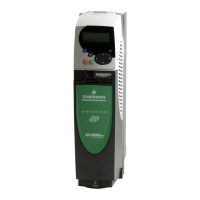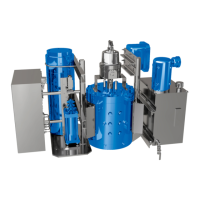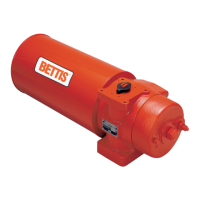Suction Groups Software Overview • 5-1
5Software Over-
view
5.1 Suction Groups
5.1.1 Introduction
The Site Supervisor RX refrigeration controller uses
suction group applications to cycle compressors in an
effort to maintain a constant suction pressure or tempera-
ture in a refrigeration system. A suction group may con-
tain up to 16 compressor stages (standard, variable-speed,
or unloader).
There are two different types of suction group applica-
tions:
• Suction Group - The “standard” suction group
application that has existed since the first version of
Site Supervisor firmware. The Suction Group uses
PID Control and with proper optimization it can
achieve very tight suction pressure or temperature
control, but compressor cycling is not based on load
analysis and can be inefficient, especially in larger
racks. All versions of Site Supervisor support the
standard Suction Group application.
• Enhanced Suction Group - Introduced in Site
Supervisor version 2.30F01, the Enhanced Suction
Group has all of the important features of the older
Suction Group application, but instead of employ-
ing user-configured PID constants to optimize oper-
ation, the Enhanced Suction Group determines
optimum control by “learning” the effect each com-
pressor and circuit load has on the suction input.
The Enhanced Suction Group is easier to configure
and more conservative with compressor cycling
than the standard Suction Group. In addition, the
Enhanced Suction Group also supports use of the
Copeland Digital Scroll and Copeland Digital Dis-
cus compressors.
5.1.2 The (Standard) Suction
Group Application
5.1.2.1 Overview of PID Control Strategy
A Suction Group application looks at suction pressure
or suction temperature to determine how many compressor
stages should be ON or OFF. The application compares
the suction pressure or temperature to its control setpoint
using PID control. The result of this comparison is a per-
centage from 0% to 100% that corresponds to the total
capacity of the compressor rack that should be active.
The Suction Group application then takes that percent-
age and determines what combination of compressors
should be switched ON or OFF to best fulfill the require-
ment. For example, if the application says that 60% of the
total compressor rack’s power should be active, and the
rack has compressors totaling 50 HP, then Site Supervisor
will try to switch on compressors totaling 30 HP.
For more information on PID, see Appendix D: PID
Control.
5.1.2.2 Variable-Speed Compressors
Suction Group applications are compatible with vari-
able-speed compressors. VS compressors allow Suction
Group applications to “fine-tune” the amount of total
active rack horsepower to react to small changes in suction
pressures or temperatures. As a result, the rack does a bet-
ter job of controlling suction, requiring less compressor
switches.
When a variable-speed compressor is present, it will
generally be treated as the primary pressure controlling
device, and any other standard compressors in the rack are
secondary devices used only if the VS compressor is
unable to fully handle the required horsepower. The vari-
able-speed compressor will be the first compressor on and
the last compressor off.
5.1.2.3 Floating Setpoint Control
The Floating Setpoint strategy within the Site Supervi-
sor RX provides a method for varying the suction setpoint
of the group based on the temperature within a circuit.
When Floating Setpoint Control is enabled, the Site Super-
visor RX monitors either a circuit temperature or a case
temperature from a CC-100 and adjusts the suction set-
point if the temperature is too low or too high.
The user establishes a range outside of which the Site
Supervisor RX is instructed to make a one PSI adjustment
to the suction pressure setpoint to either reduce or increase
the case temperature. If the temperature continues to
remain outside of the range for a user-defined period of
time, the Site Supervisor RX continues to make pressure
setpoint adjustments until the temperature is within the
established range.
By varying the suction pressure setpoint to match the
temperature requirements of the circuit, the Site Supervi-
sor RX is able to ensure product integrity while achieving
maximum rack efficiency.
5.1.3 The Enhanced Suction
Group Application
A Suction Group application looks at suction pressure
or suction temperature and compares it to the suction set-
